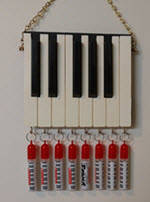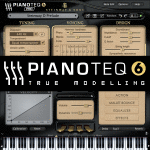|
61 registered members (cacotigon, caters, Charles Cohen, CharlesXX, anamnesis, Chrome, ando, 14 invisible),
1,202
guests, and 5
spiders. |
|
Key:
Admin,
Global Mod,
Mod
|
|
|
 Re: Understanding the deviation curve and octave type in Tunelab
[Re: Ryan Hassell]
#2197289
Re: Understanding the deviation curve and octave type in Tunelab
[Re: Ryan Hassell]
#2197289
12/14/13 12:15 AM
12/14/13 12:15 AM
|
Joined: Jun 2006
Posts: 1,393
Québec, Canada
accordeur

1000 Post Club Member
|

1000 Post Club Member
Joined: Jun 2006
Posts: 1,393
Québec, Canada
|
Yes. In the low bass and the high treble, trust your ears.
When you do it you will see the display actually hearing better, because you will be in the ball park.
Trust your ears, especialy in the extremes.
When that happens, trust your ears even more and ignore tunelab.
If you are not sure, trust tunelab.
Just use the average tuning at first, see if you agree?
If you don't, plenty of ways to find out why. That is what machines do for us.
I found out that tuning is very much subjective. After that... tuning is great.
|
|
|
 Re: Understanding the deviation curve and octave type in Tunelab
[Re: Ryan Hassell]
#2197324
Re: Understanding the deviation curve and octave type in Tunelab
[Re: Ryan Hassell]
#2197324
12/14/13 03:14 AM
12/14/13 03:14 AM
|
Joined: Jun 2003
Posts: 26,541
Oakland
BDB

Yikes! 10000 Post Club Member
|

Yikes! 10000 Post Club Member
Joined: Jun 2003
Posts: 26,541
Oakland
|
I look for the octave that makes the other intervals sound good. Since electronic tuning devices have no taste, it has to be done by ear.
Semipro Tech
|
|
|
 Re: Understanding the deviation curve and octave type in Tunelab
[Re: Ryan Hassell]
#2197454
Re: Understanding the deviation curve and octave type in Tunelab
[Re: Ryan Hassell]
#2197454
12/14/13 12:46 PM
12/14/13 12:46 PM
|
Joined: Dec 2012
Posts: 4,843
Seattle, WA USA
Ed McMorrow, RPT

4000 Post Club Member
|

4000 Post Club Member
Joined: Dec 2012
Posts: 4,843
Seattle, WA USA
|
Back in the day when Sanderson first put together his Sight-O-Tuner he demonstrated to me how his program tuned the piano. I explained that top tuners do not stretch the treble sharp as much as his program does, and they stretch the low bass flatter than his program does. He protested that "I was wrong".
With his market success, his tuning style became the default for the other tuning instruments. Hence I can usually determine if the previous tuner used a default, (isn't that a double entendre?) program by the increasing sharpness of the lowest notes since the bass pitch doesn't move much with humidity compared to the middle .
The too sharp low bass has a small, constipated sound.
In a seemingly infinite universe-infinite human creativity is-seemingly possible.
According to NASA, 93% of the earth like planets possible in the known universe have yet to be formed.
Contact: Ed@LightHammerpiano.com
|
|
|
 Re: Understanding the deviation curve and octave type in Tunelab
[Re: Ryan Hassell]
#2197466
Re: Understanding the deviation curve and octave type in Tunelab
[Re: Ryan Hassell]
#2197466
12/14/13 01:03 PM
12/14/13 01:03 PM
|
Joined: Aug 2006
Posts: 292
Utah
PianistOne111

Full Member
|

Full Member
Joined: Aug 2006
Posts: 292
Utah
|
Why not try tuning some octaves aurally, then seeing which preset gets closest to 0 in Tunelab?
One111
|
|
|
 Re: Understanding the deviation curve and octave type in Tunelab
[Re: Ryan Hassell]
#2197521
Re: Understanding the deviation curve and octave type in Tunelab
[Re: Ryan Hassell]
#2197521
12/14/13 02:29 PM
12/14/13 02:29 PM
|
Joined: Dec 2006
Posts: 121
Princeton, NJ
wcctuner

Full Member
|

Full Member
Joined: Dec 2006
Posts: 121
Princeton, NJ
|
Ryan,
I don't worry about what the deviation curve says. To me, the tuning curve in the bass is more important. On small pianos using 6:3 is usually correct. On larger pianos, 6' and up, I try 8:4 and 10:5 octaves, even 12:6 sometimes, to see the cents reading on A0. To me, 6:3 can leave the bass too narrow on larger pianos. I like to see A0 between -8 to -15 cents. For me, anything less than -6 is too narrow, over -20, is too wide. Try the different types of bass octaves and see where A0 ends up, then try tuning some octaves with the different settings, and see what sounds good to you. Sometimes there is not too much difference between between the octave types, especially on a piano such as a Steinway D, other times the difference is huge-try this on a Yamaha P22. For the top octaves, I usually stick with 4:1 octaves, but again I do try other types at times.
Dave Forman
Piano Technician, Westminster Choir College of Rider University
|
|
|
 Re: Understanding the deviation curve and octave type in Tunelab
[Re: DoelKees]
#2197728
Re: Understanding the deviation curve and octave type in Tunelab
[Re: DoelKees]
#2197728
12/14/13 10:46 PM
12/14/13 10:46 PM
|
Joined: May 2010
Posts: 2,498
Vancouver, Canada
DoelKees


2000 Post Club Member
|


2000 Post Club Member
Joined: May 2010
Posts: 2,498
Vancouver, Canada
|
Ok, let me ask it this way... after taking samples and having Tunelab establish the tuning curve, is there a way by going through the different octave types, looking at the deviation curve for each one, and determine what type of octave type would be best for that piano? If so, then what exactly am I looking for in that deviation curve? No. Kees Correction, the answer is yes. For example play with the tunelab provided sample files Steinway D.tun and average.tun. Load one up, select 6:3/4:1 default, make sure you're in full auto mode, hit "auto" on both sides, select "beats" display, hit the "+" button so the graphs fit. Now select 10:5, hit "auto" and examine the curve (may need to hit "+" to show all of the curve). For the Steinway D sample you'll see that the right part of the deviation curve, which shows the 4:1 beats, is fine: none of the beats are more than 1bps. If you try the same with the "average.tun" you'll see that the 4:1 beat rates now become unacceptably high, indicating this setting won't work well. You can examine the other beat rates by for example selecting 6:3 in the bass, WITHOUT hitting "auto". It will now show the beat rate of 6:3 if you tuned with the setting of 10:5/4:1. Does that make sense? It will allow you to reject certain stretches, but for the Steinway D example pretty much anything works and it's up to you to decide what sounds best. Kees
|
|
|
 Re: Understanding the deviation curve and octave type in Tunelab
[Re: Ryan Hassell]
#2197788
Re: Understanding the deviation curve and octave type in Tunelab
[Re: Ryan Hassell]
#2197788
12/15/13 01:03 AM
12/15/13 01:03 AM
|
Joined: May 2010
Posts: 2,498
Vancouver, Canada
DoelKees


2000 Post Club Member
|


2000 Post Club Member
Joined: May 2010
Posts: 2,498
Vancouver, Canada
|
Thanks for your replies everyone.
Kees,
So my goal is to find an octave type with the least amount of deviation?
In going through the octave types for the "average" tuning file it looks like 4:1 & 6:3 would both be acceptable options for the bass seeing as how they have the least amount of deviation from zero, and in the treble either 4:1 or 3:1 because the greatest deviation for those octaves is no more than +3 and -3.6, which is the least of all compared to all the other octave types.
I think this is starting to make sense! :-) Sort of, but the least deviation you can get by selecting 4:1 in bass and 4:1 in treble, which will have deviation exactly zero but won't sound good. You have to look for deviation for not just octave types interpolated by tunelab, but also the other relevant ones along the line of my example and they have to be acceptable which is not the same as minimizing them. For example you mention 3:1 treble for "average". If you do that you'll see the A4=A6 4:1 is already beating 2bps, I doubt it will sound very good. Kees
|
|
|
 Re: Understanding the deviation curve and octave type in Tunelab
[Re: Ryan Hassell]
#2197880
Re: Understanding the deviation curve and octave type in Tunelab
[Re: Ryan Hassell]
#2197880
12/15/13 10:24 AM
12/15/13 10:24 AM
|
Joined: Jan 2004
Posts: 2,011
Chicagoland
RonTuner

2000 Post Club Member
|

2000 Post Club Member
Joined: Jan 2004
Posts: 2,011
Chicagoland
|
Hi Ryan
Let me see if what I add brings more confusion, or more clarity to your query.... ;-)
The limitation of this type of software is that it focuses on one thing at a time - controlling the curve via manipulation of one type of octave. This then leads to the (common) belief that you express: there is a "better" or "worse" choice of octave types for each kind of piano. While this is true using the automatic setting, it may or may not be true when you begin using the arrows to manipulate the curve.
Consider when you listen to the octave/octave+ 5th and double octave combinations as you work your way down into the bass. Your ear hears a whole bunch of different partial matches going on at the same time, and if you move the low note up and down while comparing to the already tuned notes above, you may be able to hear the note go through zones of "better" and "worse" matches to those individual comparisons.
A newer technique is to save the bass for last, and press the sustain pedal as you play the note to be tuned and the note an octave above and then tune the low note to where it resonates "best" with the rest of the piano - in effect using a whole lot more information processed through your ears/brain to make a choice of where to place those bass notes.
Ok, why'd I just sidetrack to this aural stuff for an ETD discussion? Because the guidance used by these methods goes beyond simple single octave-type matching. We find that what sounds best may be a combination of partials, meaning none of them will show up as zeroed on the deviation curve, but if you toggle back and forth between a few, some will be above and some will be below.
I know when I used the program on a laptop, there was an option to have a second line on the deviation curve plotted for an optional octave match. That way you can see multiple partial matches at once and make a more educated guess as to what will possibly be a good match for that piano.
That leads to the already posted suggestion of guiding the software via a ear-placed note, then forcing the tuning curve via the arrows to cross that location. Still, the software uses one type of partial match to determine the shape of the curve - there's a lot of ways this can go wrong in challenging pianos with the more random wound strings...
Ron Koval
|
|
|
 Re: Understanding the deviation curve and octave type in Tunelab
[Re: Ryan Hassell]
#2198845
Re: Understanding the deviation curve and octave type in Tunelab
[Re: Ryan Hassell]
#2198845
12/16/13 11:16 PM
12/16/13 11:16 PM
|
Joined: Jul 2009
Posts: 543
Farmington, MO
Ryan Hassell
 OP
OP
500 Post Club Member
|
 OP
OP
500 Post Club Member
Joined: Jul 2009
Posts: 543
Farmington, MO
|
Ok, it's making sense now.
I tuned an Upright Yamaha this evening. I took samples and looked at the deviation curve with the octaves of 6:3/4:1. I switched the deviation curve from cents to beats, I saw that the 4:1 had quite a bit of deviation. I toggled over to 4:2 and it gave a smoother line. I also took a look at 8:4 in the bass. This left a big gap in the center. I thought I remembered someone saying sometime that he tried to get the two lines to connect in the middle. The 6:3 in the bass brought the two lines closer together. I tuned the piano with 6:3/4:2 and it came out sounding very nice.
I hesitate to put this but I did post a video of the customer playing this piano on my Facebook page tonight if you want to take a listen. I usually layer the EBVT3 offsets on top of Tunelab's calculated tuning curve, but I forgot to load it tonight, so this is an ET tuning. You can click on my Facebook link below.
Thanks again for all your help guys!
Last edited by Ryan Hassell; 12/16/13 11:30 PM.
|
|
|
 Re: Understanding the deviation curve and octave type in Tunelab
[Re: pinkfloydhomer]
#2198989
Re: Understanding the deviation curve and octave type in Tunelab
[Re: pinkfloydhomer]
#2198989
12/17/13 08:54 AM
12/17/13 08:54 AM
|
Joined: Feb 2011
Posts: 2,511
Suffolk, England
Withindale

2000 Post Club Member
|

2000 Post Club Member
Joined: Feb 2011
Posts: 2,511
Suffolk, England
|
A compromise between octave types that instead optimized ... something  You may find Dirk's tuner does that. Others?
Ian Russell
Schiedmayer & Soehne, 1925 Model 14, 140cm
Ibach, 1905 F-IV, 235cm
|
|
|
 Re: Understanding the deviation curve and octave type in Tunelab
[Re: Ryan Hassell]
#2199223
Re: Understanding the deviation curve and octave type in Tunelab
[Re: Ryan Hassell]
#2199223
12/17/13 04:55 PM
12/17/13 04:55 PM
|
Joined: Jan 2010
Posts: 3,087
Montreal, Quebec, Canada
Mark Cerisano

3000 Post Club Member
|

3000 Post Club Member
Joined: Jan 2010
Posts: 3,087
Montreal, Quebec, Canada
|
Hi Ryan,
You are hearing the octaves well enough to determine that Tunelab is not setting them the way you want them.
Have you tried tuning them all by ear?
In my course, after explaining the theory of octaves, I then have the students tune them by ear, without check notes, just listening to the treble to minimize the noise at the 4:2, 6:3, 8:4 partials. They are able to produce very good octaves this way.
ETDs listen to one partial and suggest a pitch that creates a mathematically calculated relationship between those partials.
Individual strings and intervals sometimes want to be tuned at pitches other than what the ETD suggests. That is why I really like Jean's post.
Maybe you are ready to do more aural tuning?
Ed, I used to say that tuners don't intentionally stretch octaves because the piano sounds good with the proper stretch; they just tune good octaves and the stretch happens naturally. I would say this to amatuers who would post things like "Tuners stretch octaves to make them more wider than in tune".
Now, I am experimenting with different stretch in the treble. The most stretched tuning involves tuning pure double octaves plus 5ths. This also produces a lot of wide octaves, 12ths, and triple octaves, but in the very high treble, it seems to help the mid section ring more, for what it's worth.
So, just to say that, sometimes aural tuners are tuning a variety of octave sizes in one piano, and also listening to a lot more large intervals than just octaves.
Hope this helps.
|
|
|
|
|
Forums40
Topics187,523
Posts2,748,398
Members91,118
| |
Most Online15,252
Mar 21st, 2010
|
|
|















